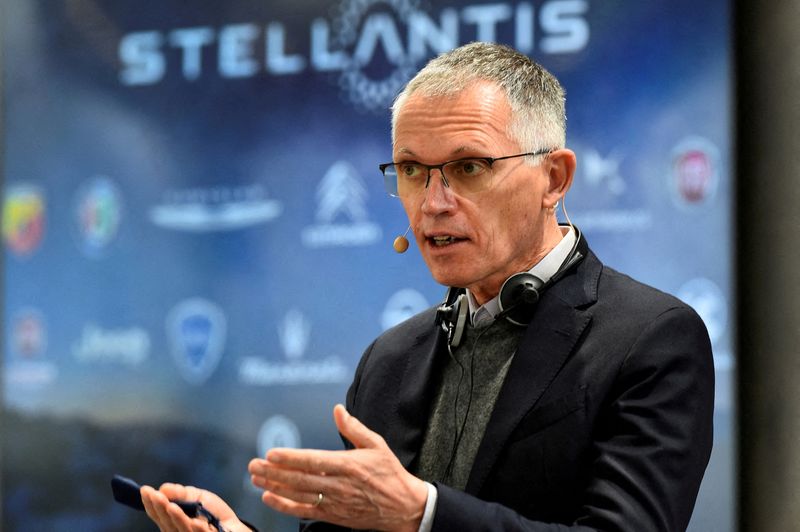By Aditi Shah
NEW DELHI (Reuters) - Stellantis chief Carlos Tavares expects India to be a profitable market and a bigger growth opportunity than the carmaker previously expected as it faces challenges in countries such as China and Russia.
India, where Stellantis sells its Jeep and Citroen brands, makes up a fraction of the carmaker's global sales but Tavares said he expects revenues in the South Asian nation to more than double by 2030 and operating profit margins to be in double-digits within the next couple of years.
Western carmakers for years have struggled to make money in India, a market dominated by Asia's Suzuki Motor and Hyundai Motor with their small, low-cost cars.
"Being profitable in India is possible if you do things the India way," Tavares said at a virtual media roundtable late on Tuesday.
This, according to him, includes sourcing parts locally and vertically integrating the supply chain to keep costs low, and engineering cars locally with features Indian consumers want and are willing to pay for. Stellantis, formed at the start of 2021 through the merger of France's PSA with Fiat Chrysler (FCA), in March outlined a new group strategy to boost revenues and keep profit margins high as it steps up efforts to roll out electric vehicles (EVs).
The focus on India comes at a time when the world's fourth-largest carmaker is facing headwinds in China, where it is reshuffling its strategy amid lagging sales and strong competition, and in Russia, where it has suspended production due to the Ukraine war. "The challenges ... are giving India a bigger opportunity, even bigger than in the past," Tavares said.
At the heart of its India plan is Stellantis' smart car platform program which it has developed in the country to allow it to launch small, gasoline-powered cars of less than four metres in length, Tavares said. Small cars are taxed at lower rates, making them more affordable.
It will also launch electric versions of its small cars starting next year, he said.
Small cars have been an Achilles heel for most global automakers in India and trying to compete in that space has been a race to the bottom for the likes of Ford and General Motors (NYSE:GM), leading to their eventual exit.
But Tavares is confident of Stellantis' approach -- before building cars, it has strengthened its supply chain.
Stellantis manufactures its powertrains and gearboxes locally and sources more than 90% of the vehicle's contents in India. Its engine plant in southern India is a global benchmark on cost and quality and it plans to do the same at its two car plants, where it manufactures Jeep SUVs and Citroen cars, Tavares said.
"We have been working for many years now on localisation, vertical integration in India, to enjoy the smart frugality of India," he said.
Stellantis has invested over one billion euros ($1.05 billion) in its Indian operations since 2015.
The carmaker also wants to source cells and batteries from India whenever the supply chain develops, Tavares said, adding that this would be the only way to build affordable EVs.
Stellantis has less than 1% of India's car market of 3 million units a year but Tavares said he is not chasing volumes in India or globally.

"We believe the world is changing and in some cases being too big may be a penalty," he said.
($1 = 0.9490 euros)